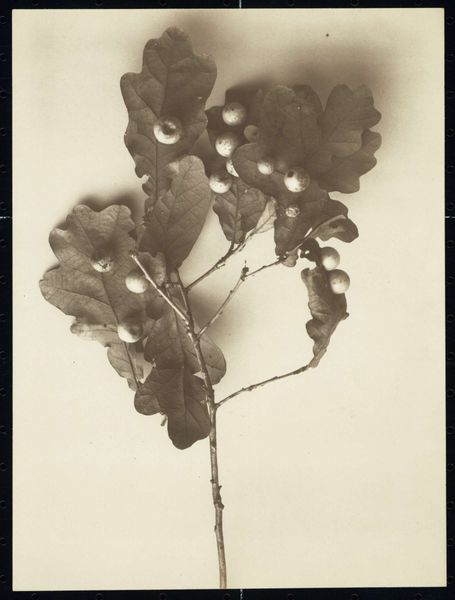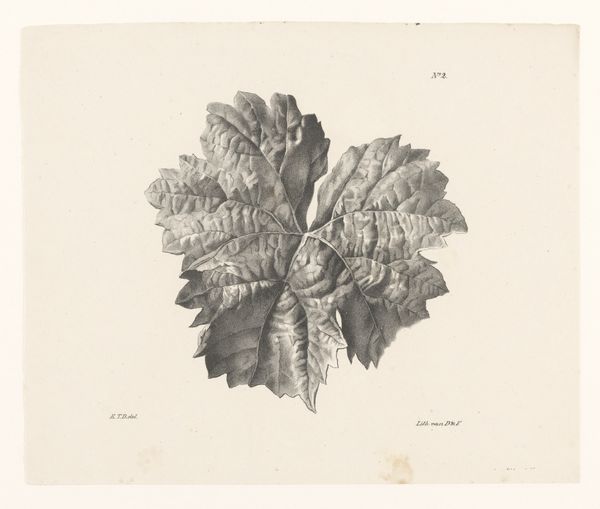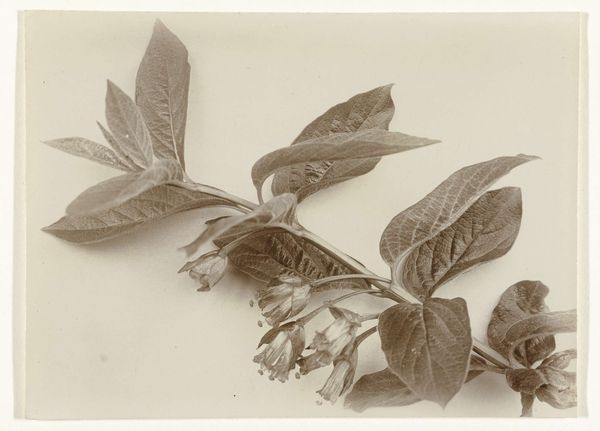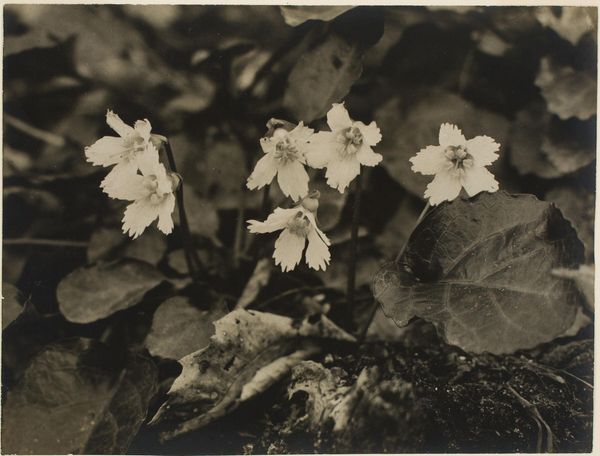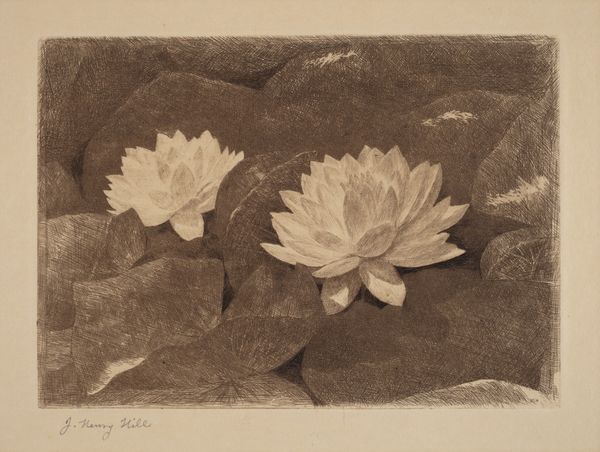
contact-print, photography
#
still-life-photography
#
landscape
#
contact-print
#
photography
#
realism
Dimensions: height 178 mm, width 224 mm
Copyright: Rijks Museum: Open Domain
Curator: Here we have "Studie van een blad," or "Study of a Leaf," a contact print created between 1851 and 1861. Editor: It feels very grounding, almost like an offering or a close examination of something inherently precious and easily overlooked. I love how it pulls the viewer in close. Curator: The piece belongs to a moment when photography was deeply engaged with documenting the natural world with an unprecedented level of detail, reflecting a shift in how we understand our relationship to nature during the Industrial Revolution. How might we view this image through the lens of ecological discourse, where we consider its historical significance in framing our perceptions of environmental issues? Editor: What strikes me is how the artist elevated a simple leaf to an iconic symbol of resilience and natural beauty, imbuing it with a timeless quality. I wonder about the cultural meaning of foliage in that era—leaves signifying cycles of life, death, and renewal, a powerful memento mori rendered with such tenderness. The realism captures the inherent fragility, doesn't it? Curator: Precisely. And how does the choice of a seemingly mundane subject—a single leaf—intersect with contemporary feminist thought regarding the devaluation of labor traditionally associated with women, such as tending gardens or collecting botanical specimens? Does the photograph implicitly challenge prevailing notions of what constitutes "significant" subject matter worthy of artistic representation? Editor: That's interesting. It's a quiet statement against rapid industrial expansion by portraying nature at its most essential. Almost a religious appreciation that predates technological change. Curator: Perhaps. It encourages a reevaluation of the power dynamics embedded within the artistic canon. By emphasizing overlooked botanical life, the photographer indirectly criticizes the masculine celebration of progress and technological prowess, advocating for a more inclusive representation of marginalized voices. Editor: Thank you; those perspectives gave me new ways to appreciate it! Curator: Indeed, by engaging with these historical artifacts and approaching with thoughtful contemporary lenses, we unlock fresh ways to engage with the world around us.
Comments
No comments
Be the first to comment and join the conversation on the ultimate creative platform.



